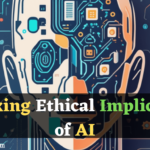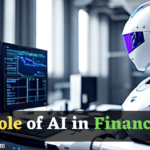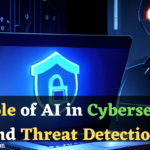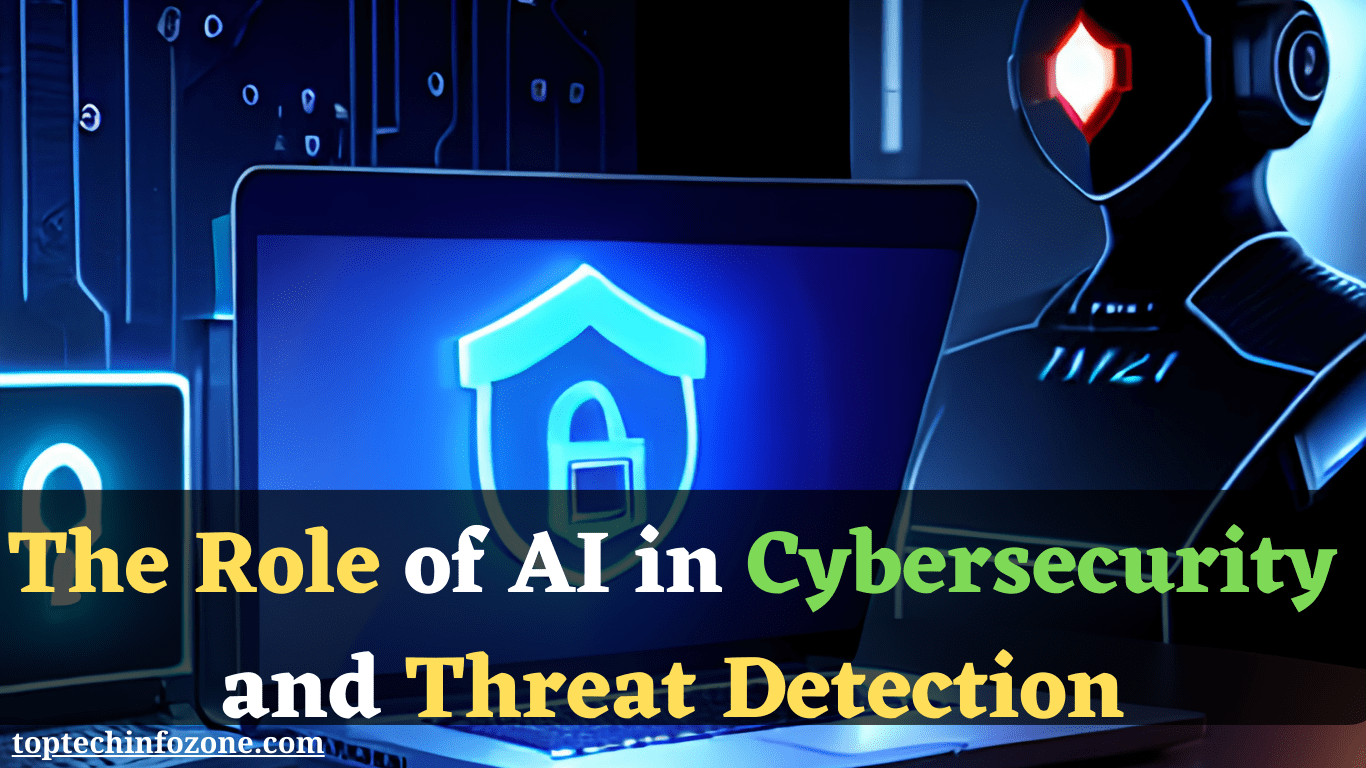Discover the pivotal role AI plays in enhancing cybersecurity and threat detection. Explore its applications, benefits, and future prospects. Learn how AI is transforming the digital landscape.
Introduction:
In the dynamic realm of cybersecurity, the emergence of Artificial Intelligence (AI) has brought revolutionary changes. The Role of AI in Cybersecurity and Threat Detection is a critical topic that showcases how AI technologies are safeguarding digital ecosystems. This article delves into the various facets of this fusion, from understanding the basics to exploring advanced applications and addressing FAQs. Let’s embark on a journey through the realms of AI and cybersecurity.
Understanding AI in Cybersecurity
AI, often depicted in sci-fi movies as sentient robots, is more akin to a digital ally in the world of cybersecurity.
Imagine AI as a digital Sherlock Holmes, constantly patrolling the virtual streets for potential threats. It’s not about human-like intelligence, but rather about pattern recognition and swift analysis.
The Dynamic Duo: AI in Cybersecurity and Threat Detection
Think of AI and threat detection as a dynamic superhero duo. While threat detection involves identifying and assessing potential risks, AI brings its superpower of speed and accuracy to the table.
It can analyse vast amounts of data at lightning speed, sifting through complex codes to uncover hidden vulnerabilities.
AI-Powered Intrusion Detection Systems
An Intrusion Detection System (IDS) acts like a security guard for your digital realm. AI turbocharges IDS by enabling real-time monitoring of activities.
It learns to differentiate between regular user behaviour and suspicious actions, thwarting unauthorized access before it even happens.
Machine Learning: Unravelling Patterns
Machine learning, a subset of AI, is the backbone of modern cybersecurity. It learns from historical data to recognize patterns and predict potential threats.
It’s like a digital fortune-teller, but instead of reading palms, it reads data streams.
Phishing Attacks: AI’s Formidable Foe
Phishing attacks, those sneaky attempts to steal your personal information, have met their match in AI.
With its ability to analyse communication patterns, AI can unmask phishing emails that might deceive even the sharpest of minds.
The Guardian of Networks: AI Firewalls
Firewalls are your digital moat and castle walls. Infused with AI, they evolve from static barriers to learning gatekeepers.
They adapt to new attack methods, making sure your digital fortress remains impenetrable.
Human-AI Collaboration: A Security Powerhouse
AI doesn’t render humans obsolete; it empowers them. Cybersecurity experts armed with AI are like a futuristic buddy cop movie.
While AI crunches data, humans provide context and creativity, working together to outsmart threats.
Zero-Day Vulnerabilities: AI’s Rapid Response
Zero-day vulnerabilities are the secret passages that hackers discover before anyone else.
AI employs its rapid learning abilities to find and fix these passages before they can be exploited, sparing you from potential digital heists.
Data Protection and Anonymization
Your data is your digital DNA, and AI ensures its protection. Through advanced anonymization techniques, AI safeguards your information, making sure it’s used ethically and securely.
The Future Landscape: AI in Cybersecurity
As technology advances, so do cyber threats. AI is at the forefront of this digital arms race, constantly adapting and enhancing its abilities to defend against emerging dangers.
The future of cybersecurity is intertwined with the future of AI.
Harnessing AI in Cybersecurity for Enhanced Threat Detection
Artificial Intelligence, often hailed as the pinnacle of human ingenuity, has found a robust application in the realm of cybersecurity.
It serves as a vigilant digital guardian, tirelessly scanning the vast expanse of data for any anomalous activities that might signal a cyber threat.
Detecting Anomalies in Real Time
AI’s ability to process enormous volumes of data in real-time allows it to identify deviations from established patterns swiftly.
This proactive approach enables early threat detection and mitigation, preventing potential breaches before they escalate.
Pattern Recognition and Behavioural Analysis
One of AI’s standout capabilities is its proficiency in recognizing patterns and analysing user behaviour.
By establishing a baseline of normal behaviour, AI can swiftly detect any aberrations or suspicious activities, such as unauthorized access attempts or unusual data transfers.
Predictive Analysis for Future Threats
AI’s predictive prowess empowers cybersecurity professionals to anticipate future threats based on historical data and ongoing trends.
This proactive strategy equips organizations with the insights needed to fortify their defences and stay one step ahead of cybercriminals.
Exploring Deep Learning and Neural Networks in Cybersecurity
The exploration of deep learning and neural networks has revolutionized the field of cybersecurity. These sophisticated AI models, inspired by the human brain, hold the potential to transform threat detection.
AI’s Impact on Healthcare and Cybersecurity Synergy
The revolution sparked by AI’s impact on healthcare finds a parallel in the realm of cybersecurity. As AI strengthens healthcare diagnostics, it also bolsters threat detection capabilities.
AI in Autonomous Vehicles: Advancements and Challenges
The integration of AI into autonomous vehicles exemplifies technology’s potential to reshape industries. However, with these advancements come new challenges, including cybersecurity concerns.
Zero-Day Vulnerabilities: AI’s Rapid Response
Zero-day vulnerabilities are the secret passages that hackers discover before anyone else.
AI employs its rapid learning abilities to find and fix these passages before they can be exploited, sparing you from potential digital heists.

AI’s Role in Vulnerability Management
The dynamic nature of cyber threats calls for an equally agile approach to vulnerability management. AI brings a multifaceted approach to the table, enhancing organizations’ ability to safeguard their digital assets.
Automated Vulnerability Assessment
Traditional vulnerability assessments can be time-consuming and resource-intensive.
AI streamlines this process by automating the identification and categorization of vulnerabilities, allowing cybersecurity teams to prioritize and address them efficiently.
Real-time Remediation
AI’s integration with vulnerability management enables swift remediation of identified vulnerabilities.
Through automated patches and updates, AI ensures that potential entry points for cyber threats are promptly sealed.
Continuous Adaptive Protection
The adaptive nature of AI-driven vulnerability management ensures that protections evolve alongside emerging threats.
This adaptive shield minimizes the window of opportunity for cybercriminals and provides organizations with a robust defence mechanism.
AI-Powered Incident Response and Mitigation
Rapid response is crucial in mitigating the impact of cyber incidents. AI’s agility and real-time analysis are instrumental in orchestrating effective incident management.
Swift Identification and Triage
AI’s ability to analyse incoming data streams in real-time enables rapid identification and classification of potential incidents.
This expedites the incident response process, allowing for immediate action.
Automated Containment Measures
In the event of a confirmed incident, AI can automate containment measures to prevent further proliferation.
This includes isolating affected systems and cutting off communication channels exploited by cyber threats.
Data-Driven Forensics
AI facilitates in-depth forensic analysis by sifting through vast amounts of data to reconstruct the sequence of events leading to the incident.
This data-driven approach provides invaluable insights for post-incident analysis and strengthening future defences.

AI’s Evolution and Future Prospects in Cybersecurity
The journey of AI in cybersecurity is marked by continuous evolution and innovation. As technology advances, AI’s role is poised to expand even further.
The Rise of AI-Powered Threat Actors
While AI enhances defensive capabilities, it’s important to acknowledge the potential misuse of AI by threat actors.
Cybercriminals may leverage AI to orchestrate sophisticated attacks, requiring cybersecurity professionals to stay vigilant and adapt.
Quantum Computing and AI Synergy
The convergence of quantum computing and AI holds transformative potential for cybersecurity.
Quantum AI can expedite complex calculations, enabling quicker decryption of encryptions used by cybercriminals.
Ethical Considerations and Regulation
As AI’s influence in cybersecurity grows, ethical considerations surrounding its use become paramount.
Striking a balance between innovation and responsible AI deployment requires robust regulatory frameworks.
Conclusion (AI in Cybersecurity and Threat Detection)
The role of AI in cybersecurity and threat detection is a remarkable testament to human ingenuity. As digital landscapes continue to evolve, AI stands as a stalwart defender, adapting and learning to counter ever-evolving cyber threats. While challenges persist, the symbiotic relationship between AI innovation and human oversight charts the course for a safer and more secure digital future.
Frequently Asked Questions (FAQs)
AI enhances threat detection through real-time anomaly detection, pattern recognition and predictive analysis.
While AI is powerful, it cannot prevent all threats. It significantly enhances cybersecurity but needs human oversight.
AI expedites incident response by swift identification, automated containment, and data-driven forensics.
AI employs pattern recognition and behavioural analysis to identify anomalies, enabling early threat detection.
While not fool proof, AI can detect zero-day attacks by recognizing abnormal behaviour patterns.
AI monitors IoT devices, detects unusual activities, and ensures prompt incident response.
AI uses NLP to analyse communication for phishing cues, thwarting potential attacks.
Challenges include integration complexities, resource-intensive training, and adapting to evolving threats.
AI’s predictive capabilities align with evolving threats, necessitating a collaborative approach between AI and human expertise.
Related Posts:
- Unlocking Ethical Implications of AI: Unveiling Unforeseen Consequences (2023)

- AI in Finance: Predictive Analytics and Fraud Detection (2023)

- Chatbots and Virtual Assistants: Enhancing Customer Experience (2023)

- AI and Robotics: Transforming Industries (2023)

- The Role of AI in Cybersecurity and Threat Detection (2023)

